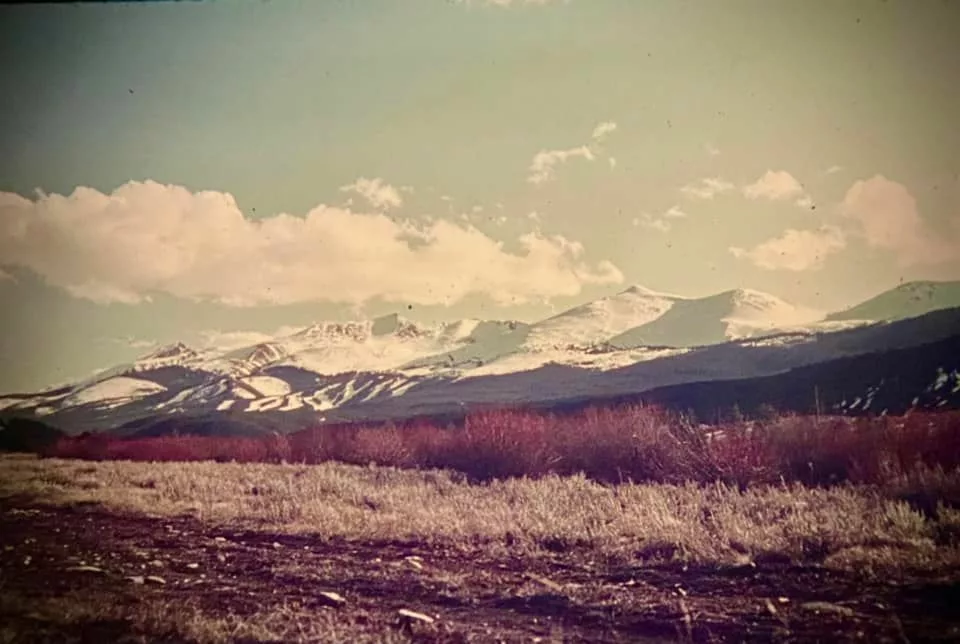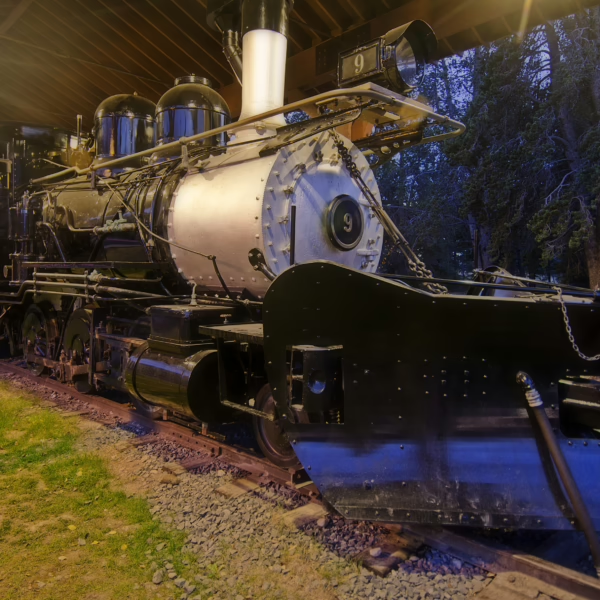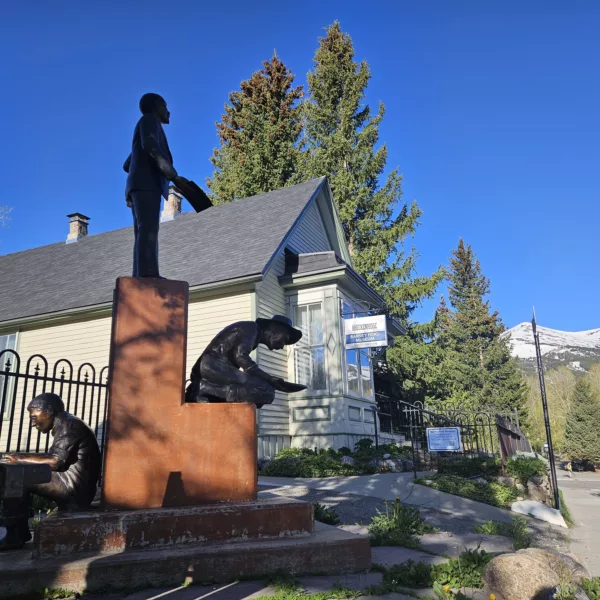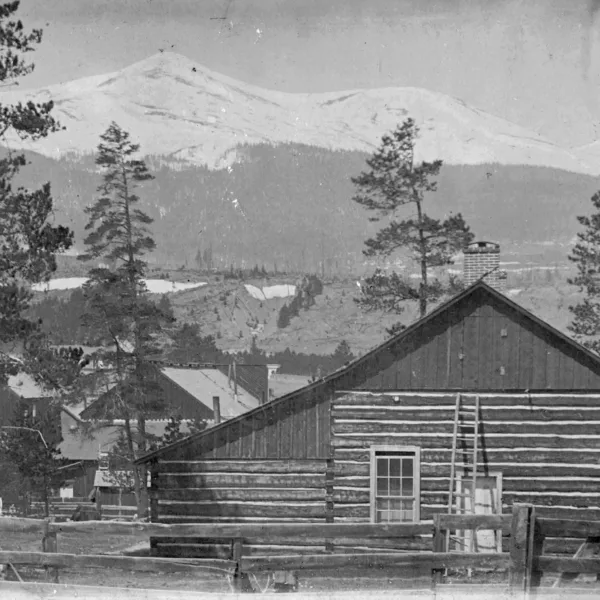Breckenridge’s Airport Legacy: Part 1
March 22, 2023 | Category: Our Collective History

Breckenridge has an Airport Road, but no airport. Curious residents and visitors often ask Breckenridge History about the legacy of Airport Road. Learn more about the long and convoluted history of airplanes and airports in the Upper Blue River Valley in this two-part series explaining the origins of Breckenridge’s Airport Road.
Breckenridge’s life as a ski town is inextricably linked to airplanes. From the first investors, to the purchase by Aspen Ski Corporation, to the battle for market share, airplanes played a critical role in the early development of Breckenridge as a ski resort.
Breckenridge’s original investors, the Rounds family of Wichita-based Rounds & Porter Lumber Company, embraced the flying lifestyle. With their vast holdings in forest properties, ranches, and lumber yards, family patriarch Ralph Rounds flew across the west to tend to his many investments. His son Bill piloted aircraft in World War II and continued to fly with a private license on his return to civilian life.
Sigurd Rockne, a co-founder of the Breckenridge Ski Area, remembered pushing out the area’s first airstrip so the Rounds family could stop off in Breckenridge. In addition to visiting Aspen or hunting at their ranch outside of Gunnison, Rounds Senior and his sons Doc and Bill came to Breckenridge to check out their business interests in real estate and ski area development.
Breckenridge’s first air strip was located north of Tiger Road. Early softball teams played there when it was called High Tor. Today, Tiger Run RV Park and the Highlands Green development sit on the old landing strip.
Needing a longer take-off and landing area, Rounds & Porter soon commissioned a new runway on old dredge placer ground in the Breckenridge valley floor. Extending from today’s Upper Blue Elementary School northward to Colorado Mountain College, the bumpy, dirt landing strip served private pilots and the Rounds family for many years
Breckenridge’s fortunes changed in the early 1960s when Ralph Rounds died of a heart attack while on a plane flying from Breckenridge to Gunnison. His son Bill — who had been Breckenridge’s biggest booster and beloved benefactor to many new business owners in town — lost Breckenridge and the other eastern assets when the brothers split the family holdings. “Bill cried when that happened,” Sigurd Rockne recalled.
By the late 1960s, private pilots frequently took advantage of the Breckenridge air strip. Long-time resident Jim Beck shared stories of flying into Breckenridge in his Oral History recording.
The Breckenridge landing strip would soon play another pivotal role in Breckenridge’s ski town development. Aspen’s purchase of the Breckenridge Ski Corporation in 1970 is well familiar today. But it almost didn’t happen.
In 1969, the Breckenridge Ski Area was quietly up for sale. Rounds and Porter, now under the direction of Doc Rounds, wanted to focus on real estate, not ski area operations. Aspen Ski Corp’s D.R.C. “Darcy” Brown heard that an investor group from Chicago pursued Breckenridge acquisition
According to Win Lockwood, eventual airport proponent, Brown needed to beat the Chicago people to Breckenridge to finalize Aspen’s purchase. Said Lockwood: “DRC got in his twin engine plane in Aspen, asked Jim Nicholls to plow the Breckenridge air strip, which was bordered by four-story tall rock piles. Somehow Jim got it plowed, DRC lands and leaves the plane on the runway. But no one picked him up. So he hiked in his cowboy boots over snow to Highway 9, thumbed a ride to the base of Peak 8. He arrived with a $100,000 cashier’s check and signed the purchase contract. An hour later, the black limousine arrives from the Denver airport with the Chicago guys. They weren’t happy.”
Brown may have flown in and out of Breckenridge safely, but in 1977 the air strip witnessed a crash that would be remembered for decades.
 After playing at O’Toole’s Roadhouse Saloon, the Yukon Gold Railroad Company needed a ride to Breckenridge’s air strip to fly to their next gig. Shamus O’Toole drove the band and stayed to watch the plane take off.
After playing at O’Toole’s Roadhouse Saloon, the Yukon Gold Railroad Company needed a ride to Breckenridge’s air strip to fly to their next gig. Shamus O’Toole drove the band and stayed to watch the plane take off.
The chartered Beechcraft Bonanza twin engine airplane, over-loaded with band members and their instruments, was under-powered for the thin air. The pilot made another error when attempting to take off on the slight uphill grade heading south.
Paul Hamilton, who lived in nearby Little B Trailer Court, remembered that he “heard a sickening thud when gravity took over and, looking out my bathroom window, saw the fuselage pointing toward the sky, the engine and prop on the ground.”
“I watched the crash happen!” O’Toole reminisced. Members of Ski Patrol helped rescue the passengers. No one was killed and one band member broke his leg. “The Sheriff came out to investigate for drugs. He was sure they were smuggling,” O’Toole recalled.
By 1976, the community was having serious conversations about developing a true airport. In January of that year, the Summit County Journal shared a headline: “Summit International Airport?” A group of airport developers from Colorado Springs lobbied the community for charter and private flights, requesting an extension of the runway, paving and maintenance. By April, the conversation turned to a commercial airport requiring FAA approval, a control tower and additional amenities.
Immediately, questions of safety came up. An article in the Summit Sentinel stated: “The site itself has its own assets and liabilities. The runway can be lengthened to about 8,000 feet, which is long enough to handle most types of aircraft, but hilly terrain makes a ‘dogleg’ approach to the runway necessary.
People who did fly in and out of the Breckenridge air strip described it as “a little hairy” and “it was near death-defying when a cross wind was blowing out of Coyne Gulch.”
The ski business was booming in the late-1970s, with growing competition from long-established ski areas like Aspen, and up-starts like Copper Mountain and Keystone. And while the ski business was humming, summers were very quiet. To grab a greater share of the year-round tourism market, many of Breckenridge’s movers-and-shakers felt that a commercial airport was necessary.
The late 1970s through the early 1980s saw increasing momentum for an airport, along with growing opposition. The next few years would see turmoil in Breckenridge around the airport and the growth it would bring. Learn more about the legacy of the Breckenridge Airport in Part 2.




